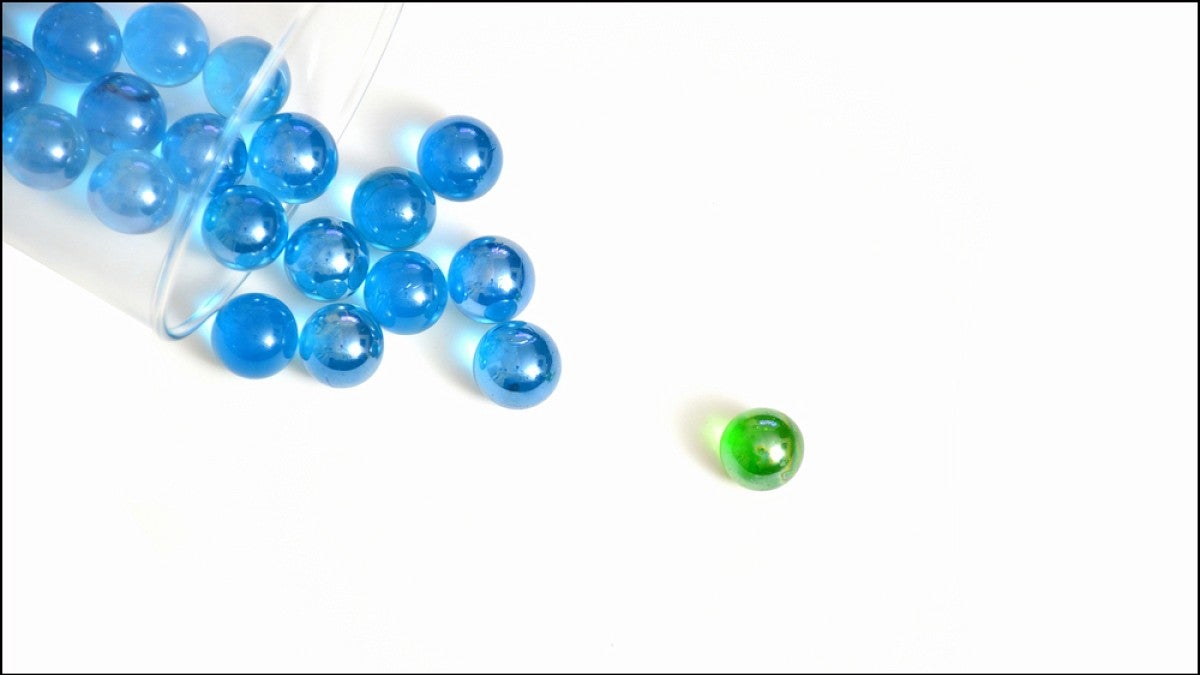Albert Einstein was wrong.
That’s the message from University of Oregon physicist Eric Corwin. Together with his brother Ivan, a mathematician at Columbia University, Corwin is setting out to demonstrate why Einstein’s model of diffusion, a theory describing the movement of particles, does not accurately predict how some particles behave in the real world. The three-year project is funded by a $1 million grant from the W.M. Keck Foundation.
“Telling people that Einstein was wrong about diffusion is the kind of thing that crackpots say. It’s like me telling you that mountain you see over there is not a mountain,” Corwin said. “But diffusion is a model, and we think it's probably got some limitations.”
Corwin said the model of diffusion is so widely accepted that it’s often seen as indistinguishable from the actual observable phenomenon, rather than a simplified theoretical model.
Even so, Corwin said Einstein’s model is beautiful in its simplicity. Created more than 100 years ago, it helped statistically describe seemingly random occurrences such as the motion of dust floating in the air or pollen on water and has been applied countless times to successfully model disparate systems.
But, Corwin said, it fails to predict the behavior of outlier particles, those that have moved the fastest and the farthest from their starting points, which Corwin calls “extreme diffusion.”
To explain the concept, Corwin describes a single bead of ink dropped into a glass of water, but without the usual forces acting upon it, such as water flow. Once suspended in liquid, the molecules in the ink will individually move at random, but statistically they will move in certain reproducible ways.
Einstein’s model predicts that every molecule is moving independently on its own merry way, taking its own “random walk.” As Corwin describes it, it’s as if every molecule were repeatedly flipping a coin to decide whether to move forward or backward.
By understanding one random walk, the theory goes, you can forecast the randomness occurring over and over again and predict how a huge number of molecules behave.
But molecules don’t behave completely independently, Corwin said. In the case of the ink drop, water has viscosity and when one water molecule moves, it drags the other molecules around it. If the molecules are moving together, they are correlated and the behavior of 10 of them should be different than the behavior of 1,000,000 of them.
Corwin and his team hope to demonstrate, both experimentally and theoretically, that microscopic correlations can result in radically different behavior on the part of fast and far-moving outlier particles.
The initial idea for the project grew out of a series of conversations several years ago between Corwin and his brother about diffusion and disordered materials. That led to several research proposals being submitted and rejected by major funding agencies, followed by the successful submission to the W.M. Keck Foundation, a philanthropic entity with a reputation for taking chances on research that challenges existing paradigms.
The research has three main goals. The first is to perform an experimental measurement of outliers in diffusion that will largely be carried out in Corwin’s lab. The team will conduct diffusion experiments in thin capillaries filled with fluid and either floating microspheres or fluorescent dyes, as well as in two- and three-dimensional systems of photons diffusing through a scattering medium. Additionally, they will conduct large-scale numerical computer simulations.
Corwin’s brother Ivan and his team at Columbia will be largely responsible for the second part of the project, developing a theoretical framework to predict how correlations influence the behavior of outliers. The final aim will be to synthesize the experimental results with the theoretical predictions. This “real world” version of diffusion will lead to a new “extreme diffusion coefficient” that promises to reveal previously unseen information about our environment.
Just as Einstein’s diffusion coefficient describes movement for the majority of particles, the Corwins’ extreme diffusion coefficient will describe the outlier behavior of diffusion. The team hopes these previously unseen and unknown phenomena will provide new knowledge that can be applied to everything from epidemiology to economics and could help answer questions such as how far and fast a virus can spread or how large an area of tissue to remove to effectively excise cancer cells.
“Our world is fueled by outliers,” Corwin said. “Information in signals is carried by the leading edge, pandemics are spread by the first infection to enter a region, extremes precipitate action. That’s true in physical and biological contexts, but also in a social and economic contexts. Having a better understanding of how these outliers move should allow us to better understand the world.”
—By Lewis Taylor, University Communications


